目录
- Task 1:Large files
- Task 2:Symbolic links
- 2.1 增加一个系统调用 symlink
- 2.2 新增文件类型
- 2.3 新增 NOFOLLOW 标志位
- 2.4 实现 sys_symlink 系统调用
- 2.5 修改 sys_open 函数
- 2.6 测试
Task 1:Large files
现在的 xv6 系统中,一个文件的 data block 的索引目录最多到一级间接索引:
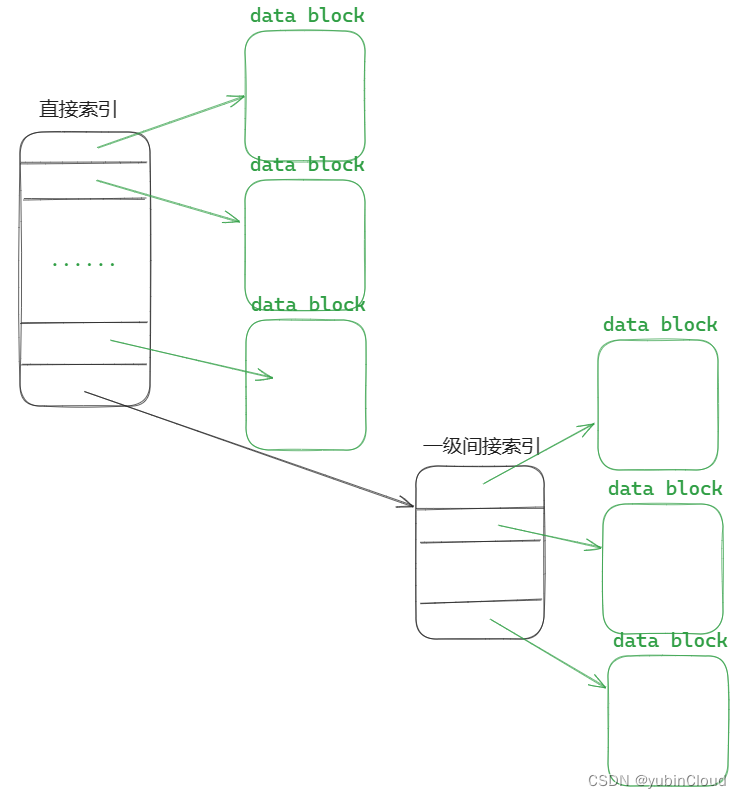
而这个 task 为了增大可支持的最大文件大小,要求扩展出二级间接索引,如下图:
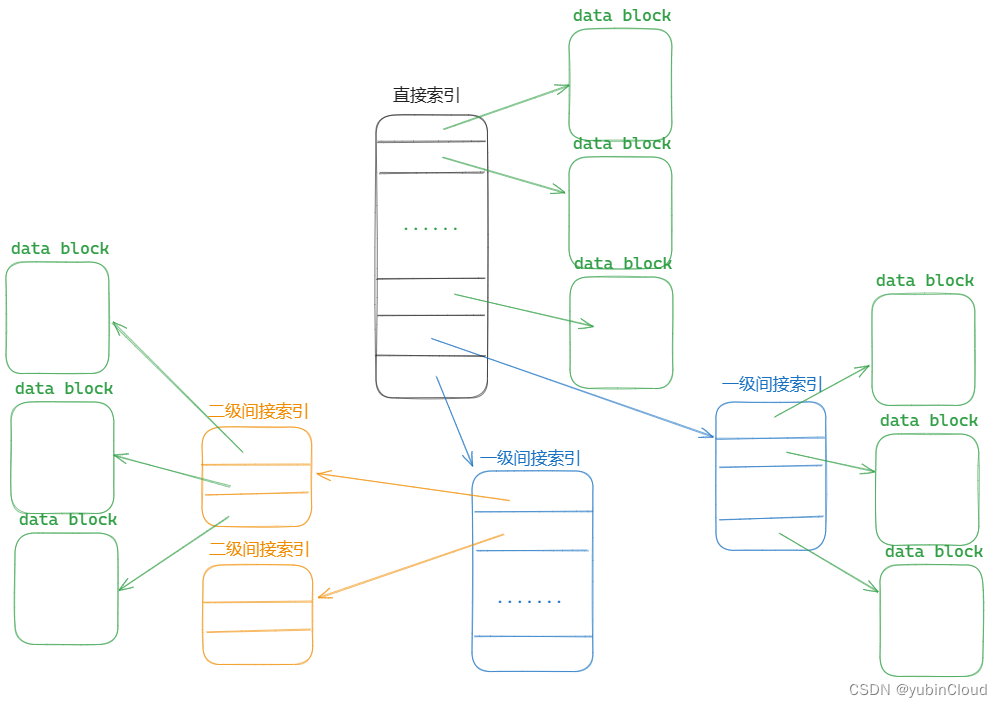
代码实现上,主要是扩展 fs.c 文件中的 bmap() 和 itrunc() 函数:
bmap():传入相对的 block number(比如这个文件的第一个 block 的相对 block number 就是 0),返回这个 block 的地址。如果没有的话需要分配创建。itrunc():释放一个文件的所有 blocks
直接索引表上有 13 个元素位置,原本是 12 个直接索引 + 1 个一级间接索引,现在需要改成 11 个直接索引 + 1 个一级间接索引 + 1 个二级间接索引。
修改 fs.h 文件中的相关参数:

相应的修改 dinode 和 inode 中 addrs 的元素数量(因为宏 NDIRECT 数值变了,所以这两个地方需要相应地修改一下):

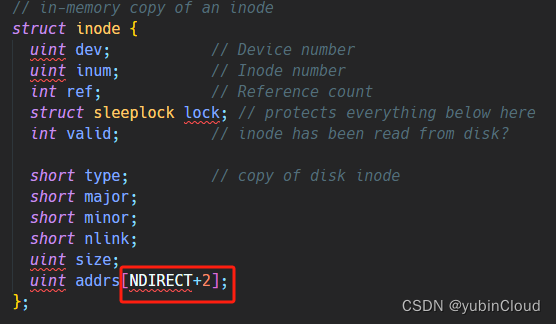
在 bmap() 函数中增加对耳机间接索引的支持:
static uint
bmap(struct inode *ip, uint bn)
{uint addr, *a;struct buf *bp;// 检查 bn 是否可以走直接索引if(bn < NDIRECT){if((addr = ip->addrs[bn]) == 0) // 如果发现 bn 的 block 还不存在,则 alloc 一个 blockip->addrs[bn] = addr = balloc(ip->dev);return addr;}bn -= NDIRECT;// 检查 bn 是否可以走一级间接索引if(bn < NINDIRECT){// Load indirect block, allocating if necessary.if((addr = ip->addrs[NDIRECT]) == 0)ip->addrs[NDIRECT] = addr = balloc(ip->dev);bp = bread(ip->dev, addr);a = (uint*)bp->data;if((addr = a[bn]) == 0){a[bn] = addr = balloc(ip->dev);log_write(bp);}brelse(bp);return addr;}bn -= NINDIRECT;// 检查 bn 是否可以走二级间接索引if (bn < N_DOUBLE_INDIRECT) {if ((addr = ip->addrs[NDIRECT + 1]) == 0) {ip->addrs[NDIRECT + 1] = addr = balloc(ip->dev);}// 先从一级间接索引中找bp = bread(ip->dev, addr);a = (uint*)bp->data;uint level1 = bn / NINDIRECT; // 在一级索引目录中的 indexif ((addr = a[level1]) == 0) {a[level1] = addr = balloc(ip->dev);log_write(bp);}brelse(bp);// 再从二级间接索引中找bp = bread(ip->dev, addr);a = (uint*)bp->data;uint level2 = bn % NINDIRECT; // 在二级索引目录中的 indexif ((addr = a[level2]) == 0) {a[level2] = addr = balloc(ip->dev);log_write(bp);}brelse(bp);return addr;}panic("bmap: out of range");
}
在 itrunc() 函数中增加对二级间接索引的支持:
void
itrunc(struct inode *ip)
{int i, j;struct buf *bp;uint *a;for(i = 0; i < NDIRECT; i++){if(ip->addrs[i]){bfree(ip->dev, ip->addrs[i]);ip->addrs[i] = 0;}}if(ip->addrs[NDIRECT]){bp = bread(ip->dev, ip->addrs[NDIRECT]);a = (uint*)bp->data;for(j = 0; j < NINDIRECT; j++){if(a[j])bfree(ip->dev, a[j]);}brelse(bp);bfree(ip->dev, ip->addrs[NDIRECT]);ip->addrs[NDIRECT] = 0;}// 释放二级间接索引目录下的 blocksif (ip->addrs[NDIRECT + 1]) {// 从直接索引中记录的指针,访问一级间接索引struct buf *bp1 = bread(ip->dev, ip->addrs[NDIRECT + 1]); // 一级间接索引的 blockuint *a1 = (uint*)bp1->data;for(j = 0; j < NINDIRECT; j++) { // 遍历一级间接索引的所有索引项if (a1[j]) {// 从一级间接索引中记录的指针,访问二级间接索引struct buf *bp2 = bread(ip->dev, a1[j]); // 二级间接索引的 blockuint *a2 = (uint*)bp2->data;for(int k = 0; k < NINDIRECT; k++) { // 遍历二级间接索引的所有索引项if (a2[k])bfree(ip->dev, a2[k]); // 释放这个 data block}brelse(bp2);bfree(ip->dev, a1[j]); // 释放二级间接索引的 block}//释放完了二阶指针块,}brelse(bp1); bfree(ip->dev, ip->addrs[NDIRECT + 1]); // 释放一级间接索引的 blockip->addrs[NDIRECT + 1] = 0;}ip->size = 0;iupdate(ip);
}
测试:
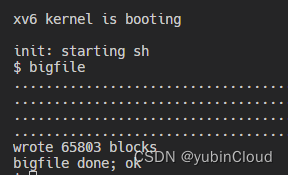
usertests 的结果:

Task 2:Symbolic links
这个 task 目标是新增一个系统调用,支持创建符号连接,就是一种新的文件类型,它链接到了另一个实际的文件。实现的思路就是,增加一种新的文件类型 “symlink”,创建 symlink 时,在文件内容中写入实际链接的文件名,这样就可以实现链接过去了。
2.1 增加一个系统调用 symlink
在 syscall.h 中增加一个新的系统调用号:

在 user/usys.pl 中增加一个 entry:

在 user/user.h 中增加声明:

在 kernel/syscall.c 中的系统调用表中增加这个系统调用:
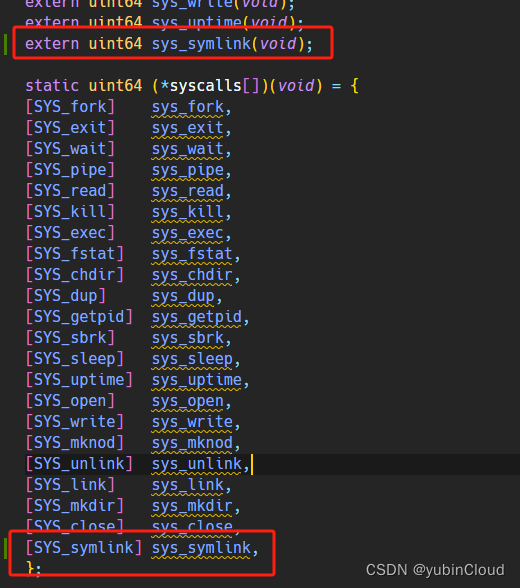
2.2 新增文件类型
我们需要新增一种 SYMLINK 的文件类型:

2.3 新增 NOFOLLOW 标志位
按照 lab 官网给出的提示:
Add a new flag to kernel/fcntl.h, (O_NOFOLLOW), that can be used with the open system call. Note that flags passed to open are combined using a bitwise OR operator, so your new flag should not overlap with any existing flags. This will let you compile user/symlinktest.c once you add it to the Makefile.
我们在 kernel/fcntl.h 中增加这个 flag:
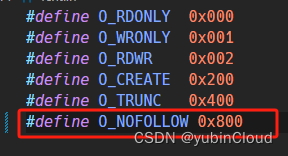
2.4 实现 sys_symlink 系统调用
在 kernel/sysfile.c 中,我们实现 sys_symlink() 函数,用来在 path 上创建一个链接到 target 的 SYMLINK 文件:
uint64 sys_symlink(void)
{char target[MAXPATH], path[MAXPATH]; // 在 path 上创建一个 symlink 指向 targetstruct inode *dp, *ip;// 校验并绑定参数if (argstr(0, target, MAXPATH) < 0 || argstr(1, path, MAXPATH) < 0) {return -1;}begin_op(); // 开始一个文件系统操作// 校验 target 是否合法if ((ip = namei(target)) != 0 && ip->type == T_DIR) {end_op();goto bad;}// 创建 symlink 文件dp = create(path, T_SYMLINK, 0, 0); // 这一步会同时为 inode 加锁if (dp == 0) {goto bad;}// 在 symlink 文件中写入 target 信息int targetLen = strlen(target);if (writei(dp, 0, (uint64)target, 0, targetLen) != targetLen) {panic("symlink: writei"); // 模仿 sys_unlink() 函数中的写法}iunlockput(dp); // 释放 inode 的 lockend_op();return 0;bad:end_op();return -1;
}
2.5 修改 sys_open 函数
我们需要修改 sys_open() 函数,官网给出的提示是:
- Modify the open system call to handle the case where the path refers to a symbolic link. If the file does not exist, open must fail. When a process specifies O_NOFOLLOW in the flags to open, open should open the symlink (and not follow the symbolic link).
- If the linked file is also a symbolic link, you must recursively follow it until a non-link file is reached. If the links form a cycle, you must return an error code. You may approximate this by returning an error code if the depth of links reaches some threshold (e.g., 10).

该函数的完整代码如下:
uint64
sys_open(void)
{char path[MAXPATH];int fd, omode;struct file *f;struct inode *ip;int n;if((n = argstr(0, path, MAXPATH)) < 0 || argint(1, &omode) < 0)return -1;begin_op();if(omode & O_CREATE){ip = create(path, T_FILE, 0, 0);if(ip == 0){end_op();return -1;}} else {if((ip = namei(path)) == 0){end_op();return -1;}ilock(ip);if(ip->type == T_DIR && omode != O_RDONLY){iunlockput(ip);end_op();return -1;}}// 当没有 NOFOLLOW 标志时,对于 SYMLINK 文件,默认的行为是打开的链接过去的 target 文件if ((omode & O_NOFOLLOW) == 0) {struct inode *dp;char target[MAXPATH];int i;for (i = 0; i < 10 && ip->type == T_SYMLINK; i++) {// 从 inode 读取数据if (readi(ip, 0, (uint64)target, 0, MAXPATH) == 0) {iunlockput(ip);end_op();return -1;}// 读取 target 的 inodedp = namei(target);if (dp == 0) {iunlockput(ip);end_op();return -1;}iunlockput(ip);ip = dp;ilock(ip);}// 如果 10 轮循环后也没找到 target 原文件if (i == 10) {iunlockput(ip);end_op();return -1;}}if(ip->type == T_DEVICE && (ip->major < 0 || ip->major >= NDEV)){iunlockput(ip);end_op();return -1;}if((f = filealloc()) == 0 || (fd = fdalloc(f)) < 0){if(f)fileclose(f);iunlockput(ip);end_op();return -1;}if(ip->type == T_DEVICE){f->type = FD_DEVICE;f->major = ip->major;} else {f->type = FD_INODE;f->off = 0;}f->ip = ip;f->readable = !(omode & O_WRONLY);f->writable = (omode & O_WRONLY) || (omode & O_RDWR);if((omode & O_TRUNC) && ip->type == T_FILE){itrunc(ip);}iunlock(ip);end_op();return fd;
}
2.6 测试
完成以上代码实现后,测试就可以跑通过了:
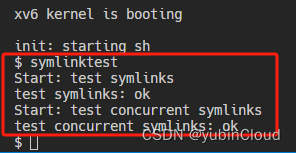







![[江苏工匠杯]easyphp](http://pic.xiahunao.cn/[江苏工匠杯]easyphp)









)
展开-行列式-线性代数)
